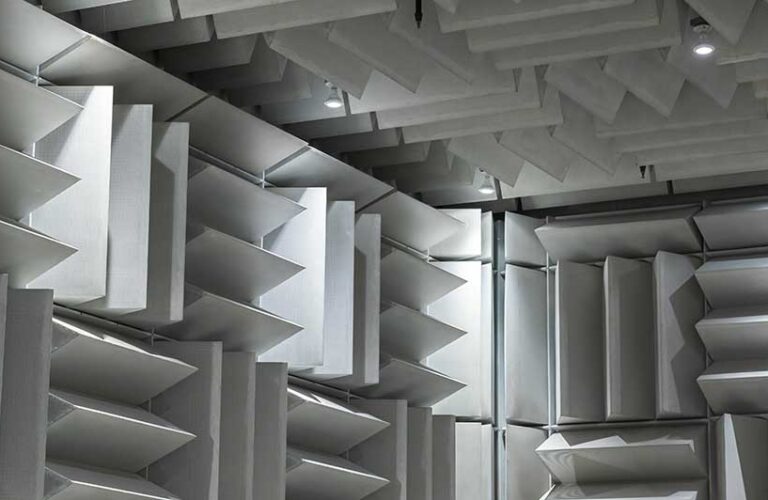In today’s technologically driven world, acoustic and environmental testing laboratories play a pivotal role in ensuring product safety, regulatory compliance, and performance optimization across various industries. Whether testing soundproofing materials, analyzing environmental pollutants, or ensuring workplace safety, these laboratories require sophisticated equipment to meet rigorous standards. Below is an exploration of the essential tools and technologies that form the backbone of modern acoustic and environmental testing facilities.
Acoustic Testing Laboratories: Precision in Sound Measurement
Acoustic testing laboratories focus on sound behavior, whether for product development, building acoustics, or environmental noise monitoring. To achieve accurate and reliable results, laboratories rely on the following key equipment:
- Sound Level Meters
A staple in acoustic testing, sound level meters measure sound pressure levels in decibels (dB). These devices are indispensable for monitoring noise pollution, workplace safety, and product compliance. Modern meters come equipped with data logging capabilities, real-time analysis, and compliance with international standards such as IEC 61672.
- Microphones and Preamplifiers
Precision-grade microphones and preamplifiers capture sound with minimal distortion. Condenser microphones, particularly free-field or diffuse-field types, are commonly used for their high sensitivity and accuracy. Paired with preamplifiers, they ensure the captured signals maintain their integrity before analysis.
- Anechoic Chambers
These specially designed rooms eliminate sound reflections and external noise, providing a controlled environment for testing sound sources. Anechoic chambers are used for speaker testing, sound absorption coefficient measurements, and studying sound propagation.
- Reverberation Chambers
In contrast to anechoic chambers, reverberation chambers are used to study how sound behaves in highly reflective environments. They are vital for assessing sound absorption properties of materials and equipment performance in real-world scenarios.
- Data Acquisition Systems (DAQs)
Modern acoustic testing relies on DAQs to collect and process sound data from multiple channels. These systems often include software tools for spectrum analysis, time-domain analysis, and automated reporting.
- Frequency Analyzers
Analyzing the frequency content of sound is crucial for understanding its characteristics. Frequency analyzers, often integrated into DAQs or sound level meters, enable detailed insights into sound spectra and noise sources.
Environmental Testing Laboratories: Safeguarding Air, Water, and Soil
Environmental testing laboratories monitor the impact of human activity on natural resources and ensure compliance with environmental regulations. This requires a diverse array of specialized equipment:
- Gas Chromatographs (GC)
Gas chromatography is a cornerstone of air quality testing. GC systems analyze volatile organic compounds (VOCs), hazardous air pollutants, and greenhouse gases with high precision.
- Mass Spectrometers (MS)
Often coupled with gas or liquid chromatographs, mass spectrometers identify and quantify chemical species in air, water, and soil samples. They are essential for detecting trace contaminants and pollutants.
- Particulate Matter Samplers
PM samplers collect airborne particles for analysis, including PM10 and PM2.5 fractions. These devices are crucial for assessing air quality and determining compliance with regulatory standards.
- Water Quality Analyzers
These instruments measure parameters such as pH, turbidity, dissolved oxygen, and conductivity in water samples. Advanced models can detect heavy metals, nitrates, and microbial contamination.
- Soil Analyzers
Soil analysis equipment assesses nutrient levels, organic content, and contamination by heavy metals or pesticides. Such testing ensures the health of agricultural land and compliance with environmental guidelines.
- Environmental Chambers
Environmental chambers simulate conditions like temperature, humidity, and UV exposure to test material durability and product performance under varying environmental conditions.
Cross-Disciplinary Equipment and Technologies
Many testing laboratories benefit from tools and systems that bridge acoustic and environmental disciplines:
- Infrared (IR) Thermography
IR thermography is used to detect thermal anomalies in building acoustics and environmental inspections. It is particularly useful for identifying insulation defects and energy loss.
- Vibration Testing Systems
In both acoustic and environmental domains, vibration testing systems evaluate the structural integrity of materials and the acoustic performance of buildings or products under dynamic stress.
- Automated Testing Platforms
Automation streamlines repetitive testing tasks, improving accuracy and efficiency. Robotic samplers, programmable analyzers, and AI-powered diagnostics are increasingly common in cutting-edge laboratories.
- Cloud-Based Data Management
Modern laboratories leverage cloud computing for real-time data sharing, analysis, and storage. Cloud platforms enhance collaboration and ensure data security while enabling remote monitoring of test setups.
The Role of Standards and Calibration
Accurate and reliable results depend on adherence to international standards such as ISO 9001 for quality management or ISO 14001 for environmental management. Regular calibration of equipment, traceable to national or international standards, ensures measurement accuracy and compliance.
Key tools for calibration include:
- Acoustic Calibrators: For sound level meters and microphones.
- Reference Materials: For validating chemical analysis methods.
- Traceable Standards: For gas and liquid testing equipment.
Emerging Trends and Future Directions
The field of acoustic and environmental testing is evolving rapidly with advancements in technology. Notable trends include:
- IoT Integration: Internet of Things (IoT) devices enable continuous monitoring of noise and environmental parameters with remote control and analysis capabilities.
- Miniaturization: Portable and handheld devices allow on-site testing with laboratory-grade precision.
- AI and Machine Learning: These technologies aid in data analysis, pattern recognition, and predictive modeling, making testing more efficient and insightful.
- Green Testing Practices: Laboratories are adopting sustainable practices, such as energy-efficient equipment and waste minimization, to align with environmental goals.



